Abstract
A new antimetabolite antibiotic, U-42,126, was discovered by use of a specific in vitro screen. U-42,126 was produced by the fermentation of Streptomyces sviceus. Its antimicrobial activity in vitro was limited to fungi. Certain bacteria were inhibited only when cultivated in completely synthetic media. U-42,126 was active in vivo against L1210 leukemia in mice.
Full text
PDF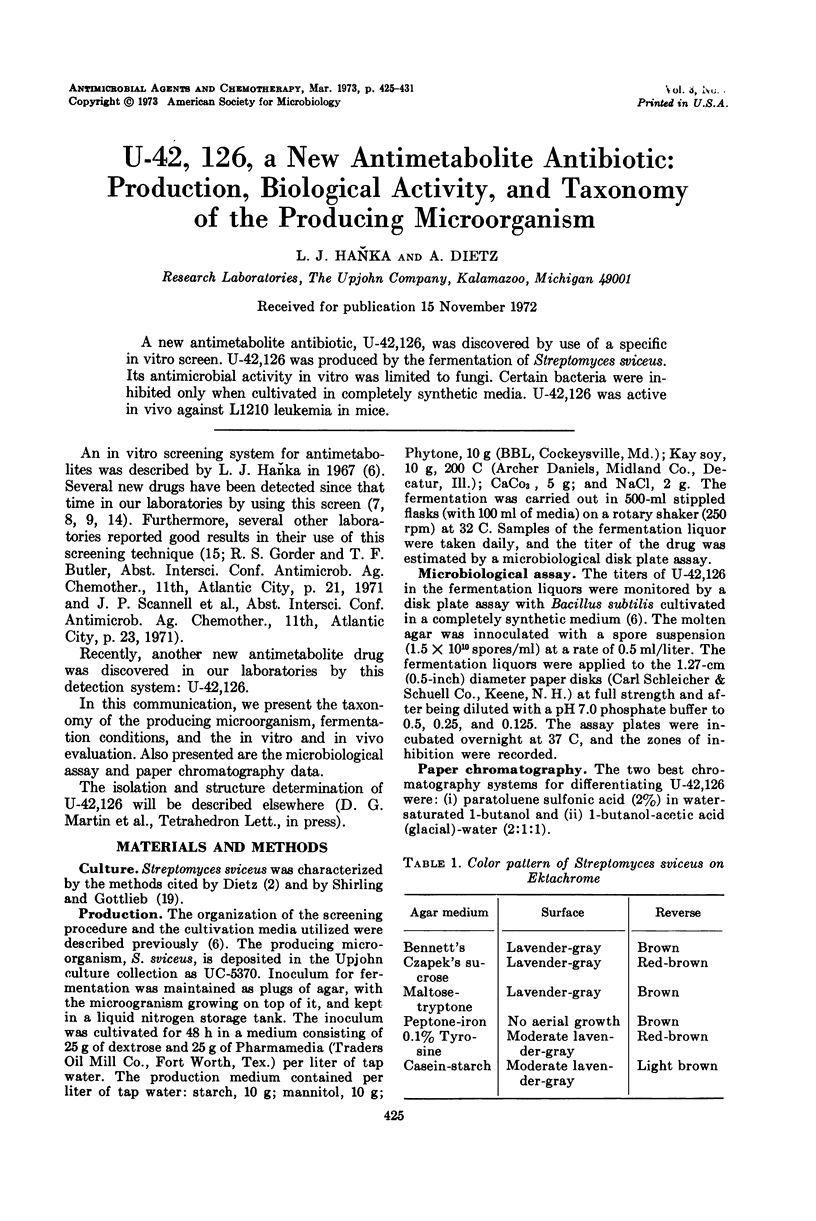
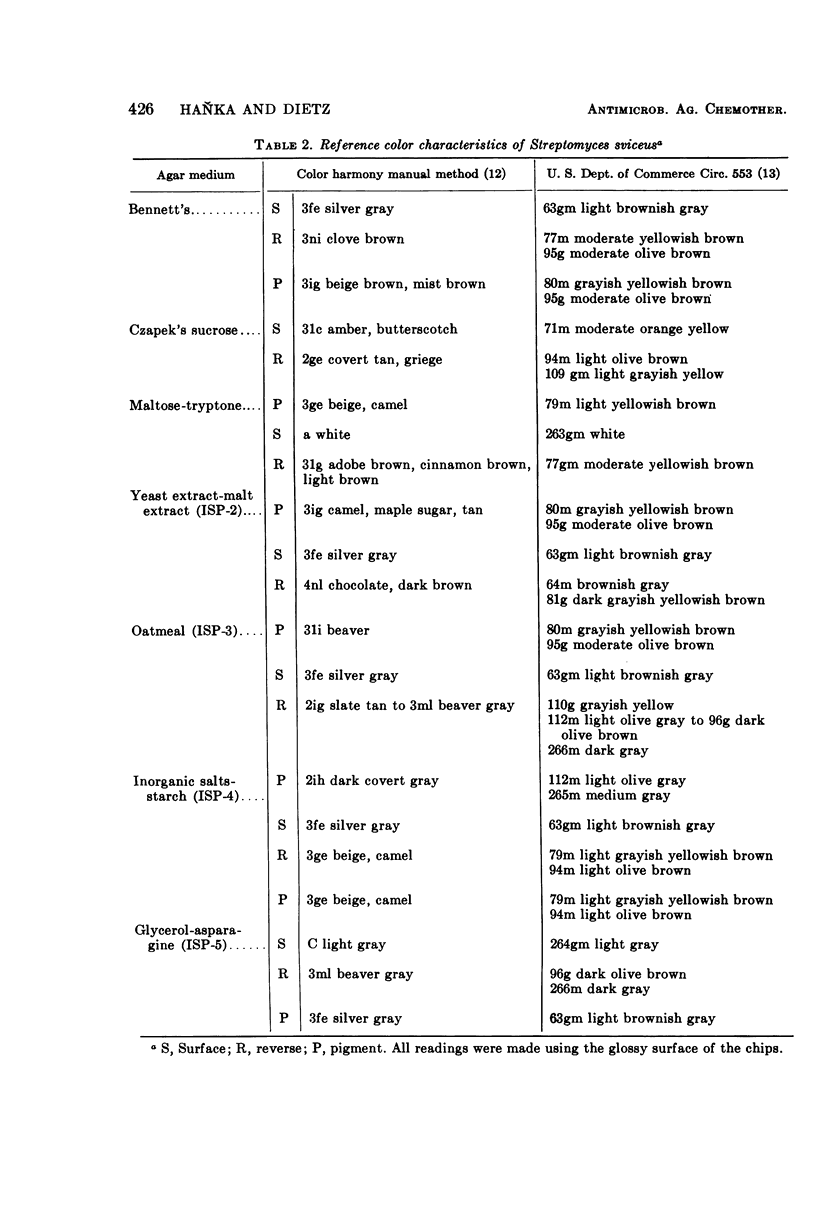
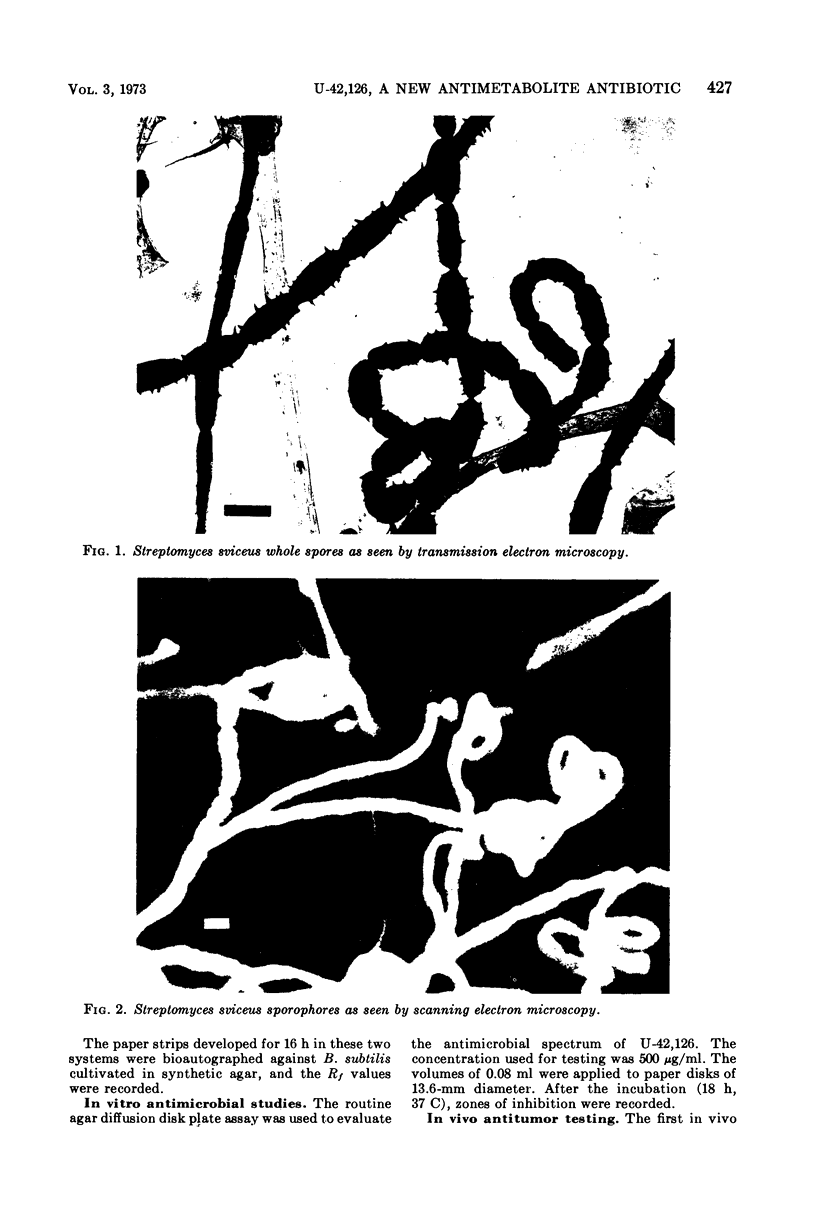
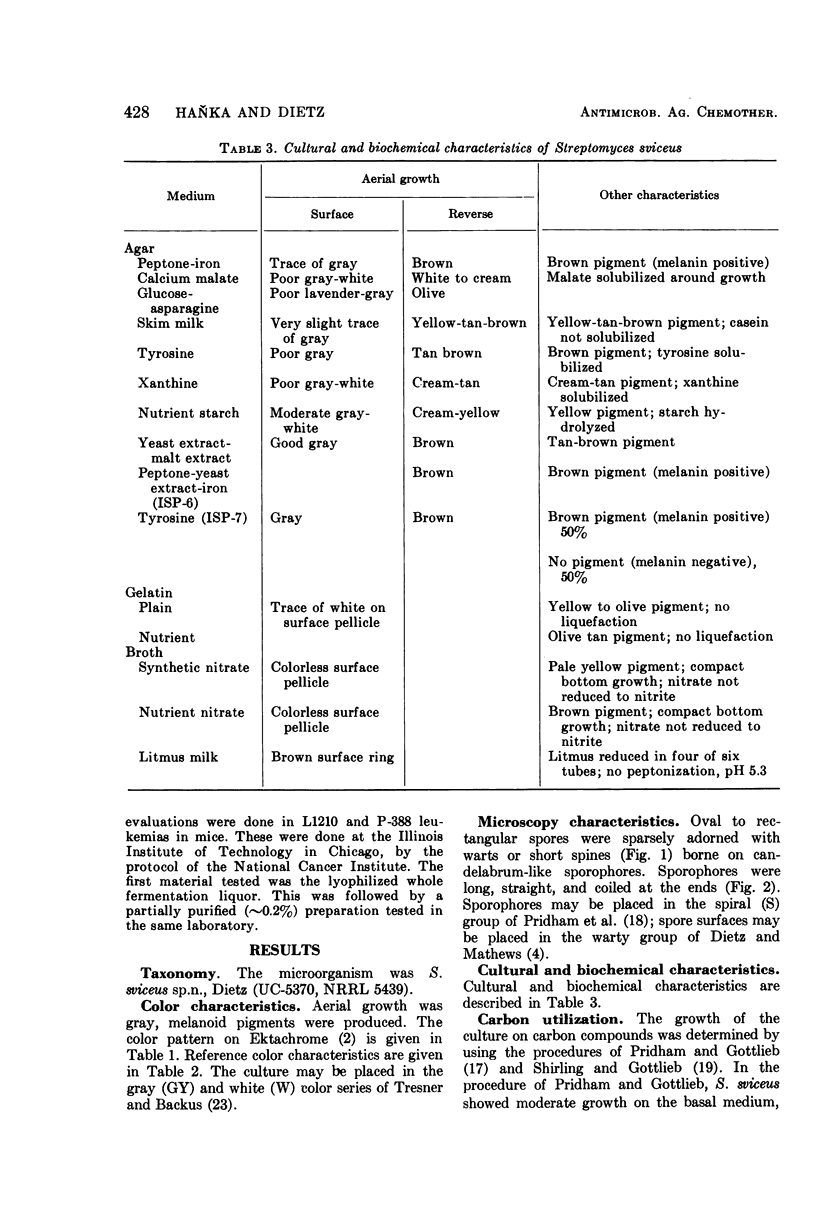
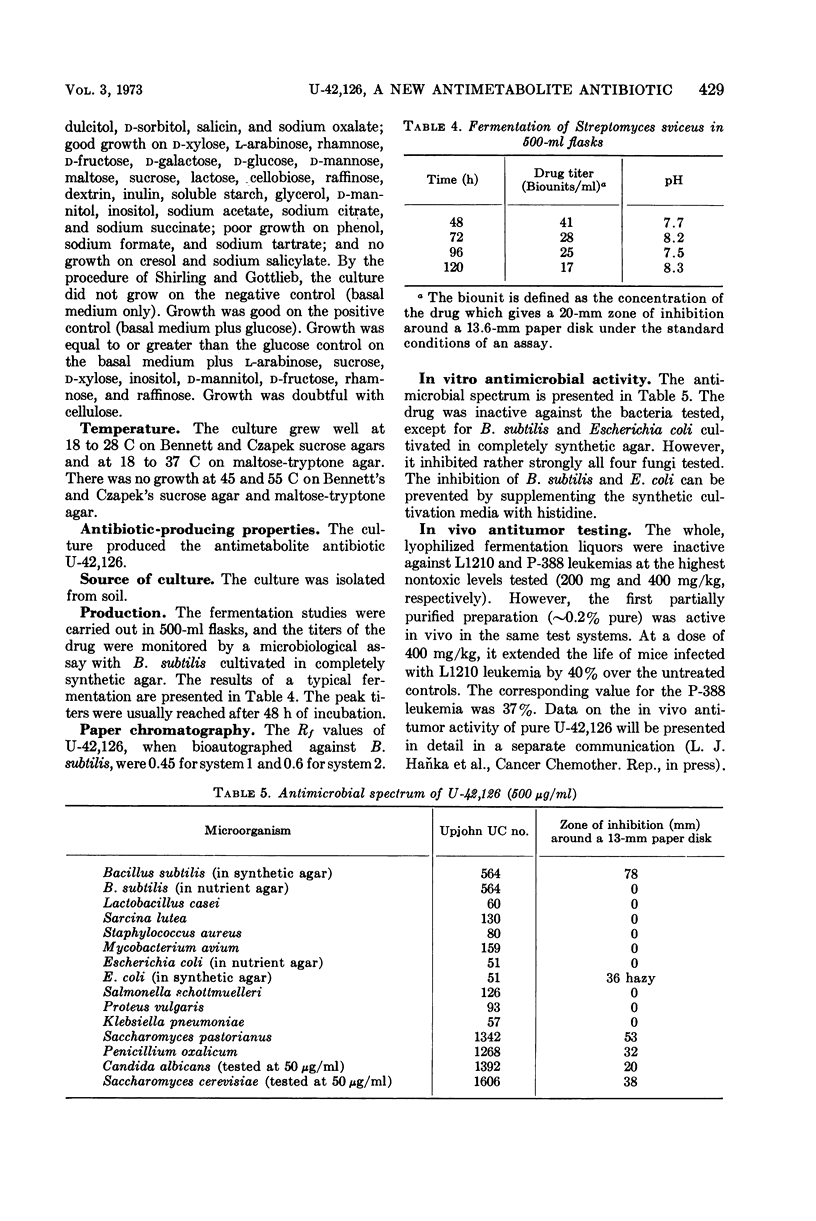
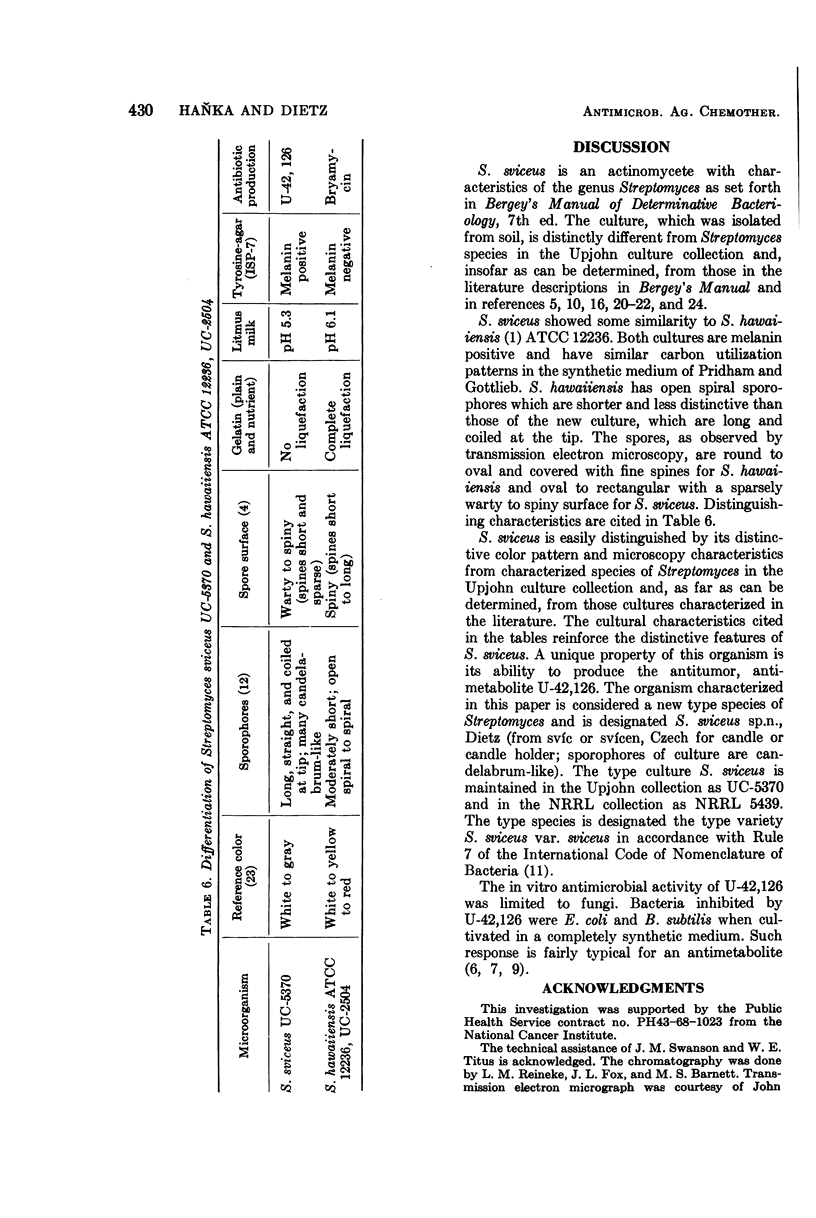
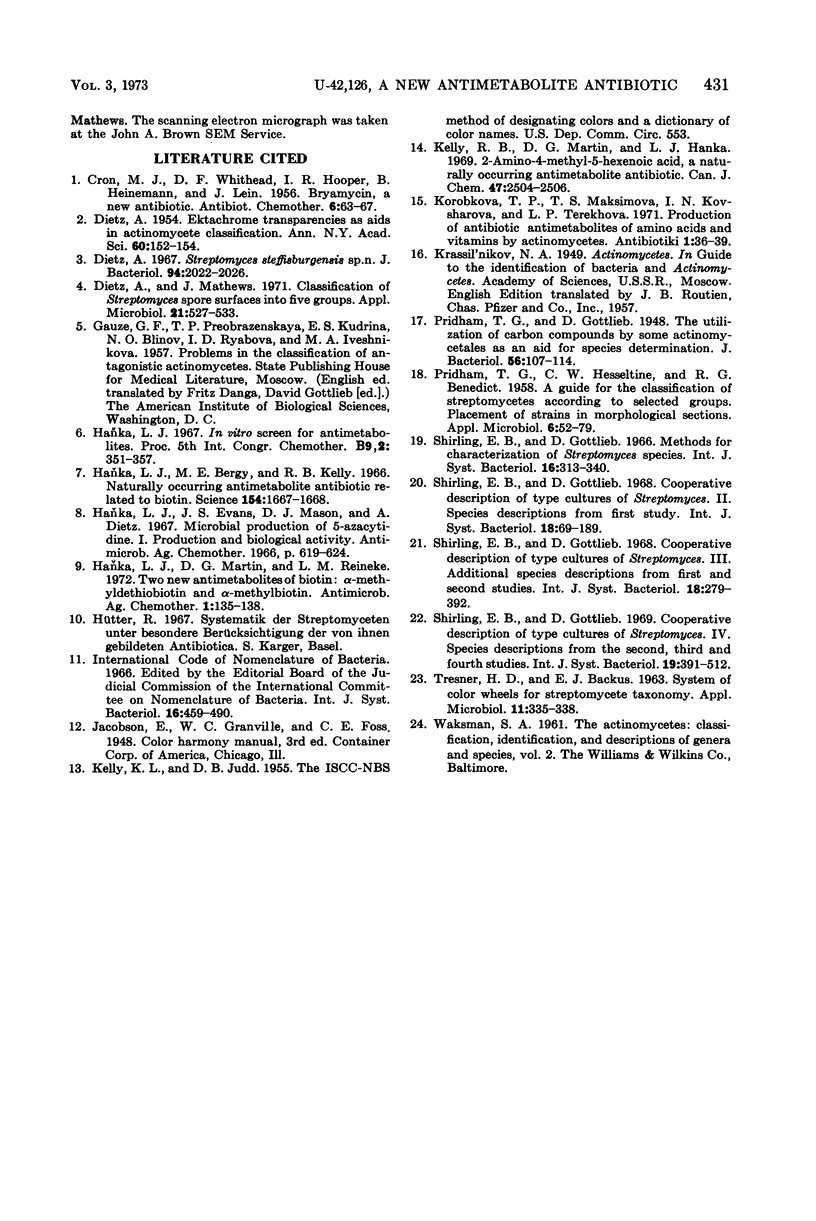
Images in this article
Selected References
These references are in PubMed. This may not be the complete list of references from this article.
- DIETZ A. Ektachrome transparencies as aids in actinomycete classification. Ann N Y Acad Sci. 1954 Oct 29;60(1):152–154. doi: 10.1111/j.1749-6632.1954.tb40004.x. [DOI] [PubMed] [Google Scholar]
- Dietz A., Mathews J. Classification of Streptomyces spore surfaces into five groups. Appl Microbiol. 1971 Mar;21(3):527–533. doi: 10.1128/am.21.3.527-533.1971. [DOI] [PMC free article] [PubMed] [Google Scholar]
- Dietz A. Streptomyces steffisburgensis sp.n. J Bacteriol. 1967 Dec;94(6):2022–2026. doi: 10.1128/jb.94.6.2022-2026.1967. [DOI] [PMC free article] [PubMed] [Google Scholar]
- Hanka L. J., Bergy M. E., Kelly R. B. Naturally occurring antimetabolite antibiotic related to biotin. Science. 1966 Dec 30;154(3757):1667–1668. doi: 10.1126/science.154.3757.1667. [DOI] [PubMed] [Google Scholar]
- Hanka L. J., Evans J. S., Mason D. J., Dietz A. Microbiological production of 5-azacytidine. I. Production and biological activity. Antimicrob Agents Chemother (Bethesda) 1966;6:619–624. [PubMed] [Google Scholar]
- Hanka L. J., Martin D. G., Reineke L. M. Two new antimetabolites of biotin: alpha-methyldethiobiotin and alpha-methylbiotin. Antimicrob Agents Chemother. 1972 Feb;1(2):135–138. doi: 10.1128/aac.1.2.135. [DOI] [PMC free article] [PubMed] [Google Scholar]
- Korobkova T. P., Maximova T. S., Kovsharova I. N., Terekhova L. P. Obrazovanie aktinomitsetami antibiotikov-antimetabolitov riada aminokislot i vitaminov. Antibiotiki. 1971 Jan;16(1):36–39. [PubMed] [Google Scholar]
- PRIDHAM T. G., HESSELTINE C. W., BENEDICT R. G. A guide for the classification of streptomycetes according to selected groups; placement of strains in morphological sections. Appl Microbiol. 1958 Jan;6(1):52–79. doi: 10.1128/am.6.1.52-79.1958. [DOI] [PMC free article] [PubMed] [Google Scholar]
- Pridham T. G., Gottlieb D. The Utilization of Carbon Compounds by Some Actinomycetales as an Aid for Species Determination. J Bacteriol. 1948 Jul;56(1):107–114. doi: 10.1128/jb.56.1.107-114.1948. [DOI] [PMC free article] [PubMed] [Google Scholar]
- TRESNER H. D., BACKUS E. J. System of color wheels for streptomycete taxonomy. Appl Microbiol. 1963 Jul;11:335–338. doi: 10.1128/am.11.4.335-338.1963. [DOI] [PMC free article] [PubMed] [Google Scholar]




